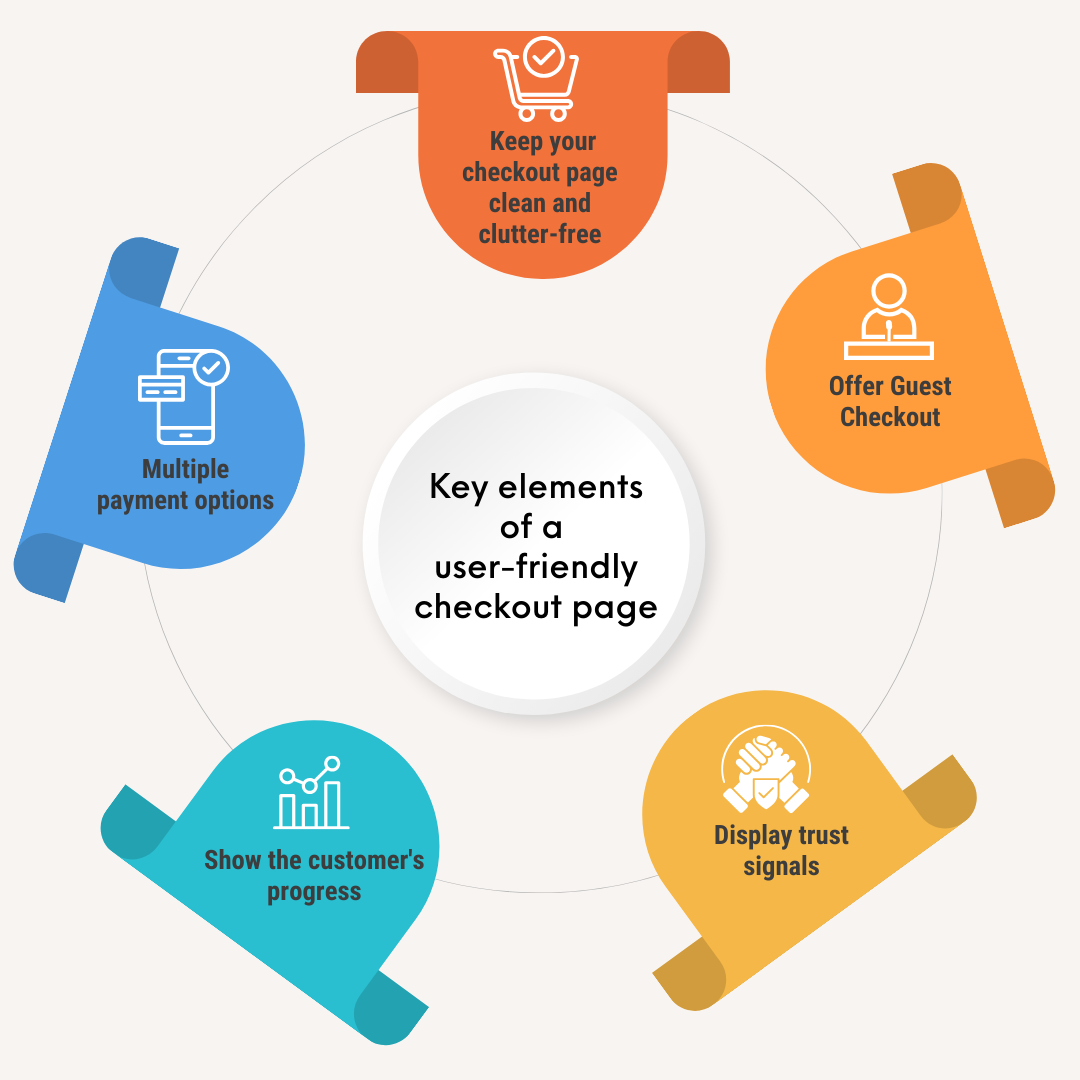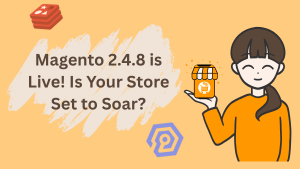The importance of a seamless checkout experience in ecommerce
As an ecommerce business owner, you understand the significance of providing a seamless checkout experience to your customers. A smooth and hassle-free checkout process can significantly impact your ecommerce success by increasing conversions, reducing cart abandonment rates, and building trust with your customers.
A seamless checkout experience is crucial because it is the final step in the customer journey. It is the point where your potential customers make the decision to complete their purchase or abandon their cart. If the checkout process is complicated, confusing, or time-consuming, customers are more likely to abandon their purchase and seek alternative options. On the other hand, if the checkout process is effortless and user-friendly, customers are more likely to complete their purchase and become loyal customers.
- Common challenges in the ecommerce checkout process
- Key elements of a user-friendly checkout page
- Optimizing the checkout flow for mobile users
- Strategies for reducing cart abandonment rates
- Building trust and security in the checkout process
- Case studies of successful ecommerce checkout designs
- Testing and optimizing your checkout process
- Conclusion: The impact of a seamless checkout on ecommerce success
1. Common challenges in the ecommerce checkout process
There are several common challenges that e-commerce businesses face when it comes to the checkout process. One of the main challenges is a lengthy and complicated checkout form. Customers often find it frustrating to fill out long forms with unnecessary fields, which can lead to cart abandonment.
To overcome this challenge, it is essential to streamline your checkout form by only asking for necessary information and using autofill features whenever possible.
Another challenge is unexpected costs during the checkout process. Customers appreciate transparency and dislike surprises, especially when it comes to additional fees such as shipping costs or taxes. To address this challenge, clearly communicate any additional costs upfront and provide shipping calculators or estimators to give customers an idea of the total cost before they reach the checkout page.
Lastly, technical issues can also hinder the checkout process. Slow loading times, error messages, or crashes can frustrate customers and discourage them from completing their purchases. It is crucial to regularly test your checkout process to identify and fix any technical issues promptly.
2. Key elements of a user-friendly checkout page
To create a user-friendly checkout page, you need to focus on the key elements that contribute to a seamless experience. Firstly, a simplified and intuitive layout is essential. Keep your checkout page clean and clutter-free, guiding customers through the process step by step. Use clear and concise instructions to eliminate confusion and make it easy for customers to navigate from one step to another.
Secondly, provide multiple payment options to cater to different customer preferences. Offering popular payment gateways, such as PayPal or Razorpay, allows customers to choose the method they are most comfortable with. Additionally, consider implementing a guest checkout option for customers who prefer not to create an account.
Another crucial element is progress indicators. Progress indicators give customers a sense of control and help them understand how many steps are left in the checkout process. It is advisable to display the progress indicators prominently, ensuring customers are aware of their progress at all times.
A one-page checkout is also one of the key elements in a user-friendly checkout process. This innovative approach allows customers to complete their purchases swiftly and effortlessly. The simplicity and efficiency of a one-page checkout not only reduce cart abandonment rates but also enhance the overall user experience.
The simplicity of making a purchase without having to create an account is one of the key features of a user-friendly online shopping experience offered by guest checkout. Customers can simplify their purchase by selecting guest checkout, which minimizes the time and effort generally needed for registration. This strategy improves privacy and trust by reducing friction in the purchasing process and by ensuring the security of personal information.

3. Optimizing the checkout flow for mobile users
With the increasing use of mobile devices for online shopping, optimizing the checkout flow for mobile users is essential for ecommerce success. Mobile users have different needs and limitations compared to desktop users, so it is crucial to create a seamless mobile checkout experience.
One strategy is to implement a responsive design that adapts your checkout page to different screen sizes and resolutions. This ensures that your checkout page remains user-friendly and visually appealing, regardless of the device being used.
Furthermore, consider implementing mobile-specific features such as mobile wallets or QR code scanning for payment. These features can significantly simplify the checkout process for mobile users and make it more convenient for them to complete their purchase.
We all know that mobile users are increasing day by day, so it is important to create a user-friendly checkout page. Moreover, nowadays, most of the users are purchasing products through mobile phones. At ulmart.com, we have also seen that most of the purchases are made through mobile phones.
4. Strategies for reducing cart abandonment rates
Cart abandonment is a common concern for ecommerce businesses, but there are several strategies you can implement to reduce cart abandonment rates. Cart abandonment occurs when a potential customer adds items to their online shopping cart but does not complete the purchase.
Cart abandonment occurs when a potential customer adds items to their online shopping cart but does not complete the purchase. One effective strategy is to offer a guest checkout option. Many customers prefer not to go through the hassle of creating an account, so providing the option to checkout as a guest can encourage them to complete their purchase.
Another strategy is to implement a cart recovery email campaign. If a customer abandons their cart, send them a personalized email reminding them of the items left in their cart and offering an incentive, such as a discount or free shipping, to encourage them to return and complete their purchase.
Additionally, simplifying the checkout process by minimizing the number of steps and form fields can also help reduce cart abandonment rates. The more straightforward and streamlined the process, the more likely customers are to complete their purchase.

5. Building trust and security in the checkout process
Building trust and security in the checkout process is crucial to reassure customers and increase conversions. One way to establish trust is by prominently displaying trust seals, security badges, or SSL certificates on your checkout page. These visual cues indicate to customers that their information will be transmitted securely and their payment details will be protected.
Moreover, offering secure payment options such as encrypted credit card processing or trusted third-party payment gateways can also enhance the perceived security of your checkout process. Customers are more likely to complete their purchase if they trust that their payment information is safe.
Lastly, providing clear and transparent refund and return policies can also build trust with your customers. Clearly communicate your policies, including any time limits or restrictions, to reassure customers that they can return or exchange their purchase if needed.

6. Case studies of successful ecommerce checkout designs
To gain valuable insights and inspiration for enhancing your ecommerce checkout design, it's beneficial to delve into successful case studies. A prime example is Ulamart's checkout process, renowned for its seamless simplicity and user-friendly approach. For registered users, a one-click purchasing option streamlines the experience.
Trust seals prominently displayed on the page further bolster credibility, and a range of payment options, including Ulamart's own gateway, contribute to an elevated checkout journey.
Additionally, Ulamart's design caters adeptly to mobile users with its responsive layout across devices. The provision of a streamlined checkout process is complemented by visual progress indicators that expertly guide customers. This process maintains a focus on security and fosters trust through the presentation of trust badges, collectively shaping a confident and reassuring checkout experience.
Before, the best online store for organic products Ulamart.com had a three-step checkout process. It is now only a one-step checkout process. After that, we've noticed that our sales have increased and that users find it easier to make purchases.

7. Testing and optimizing your checkout process
Testing and optimizing your checkout process is an ongoing process that can help you identify and address any issues or barriers to conversion. A/B testing is a useful technique that involves comparing two versions of your checkout page to determine which one performs better. By testing different elements such as layout, color scheme, button placement, or form fields, you can gather data-driven insights and make informed decisions to optimize your checkout process.
It is also crucial to regularly monitor and analyze your checkout analytics to identify any bottlenecks or areas for improvement. Pay attention to metrics such as cart abandonment rate, conversion rate, and average order value. By continuously monitoring these metrics, you can identify trends, spot potential issues, and make data-driven improvements to your checkout process.
8. Conclusion: The impact of a seamless checkout on ecommerce success
In conclusion, creating a seamless checkout experience is crucial for ecommerce success. By focusing on key elements such as a simplified layout, multiple payment options, and progress indicators, you can provide a user-friendly checkout page that encourages customers to complete their purchases.
Optimizing the checkout flow for mobile users, implementing strategies to reduce cart abandonment rates, and building trust and security in the checkout process are essential steps to increase conversions and build customer loyalty.
By studying successful case studies, utilizing tools and plugins, and continuously testing and optimizing your checkout process, you can enhance the overall ecommerce experience for your customers and drive business growth.










Creating a Seamless Checkout Experience: Web Design Strategies for Ecommerce Success
The importance of a seamless checkout experience in ecommerce As an ecommerce business owner, you...
Share this link via
Or copy link